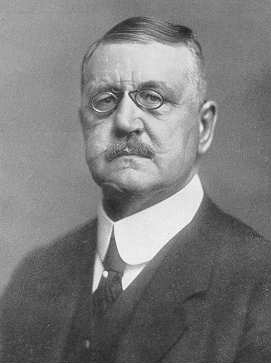Wolfgang Kapp facts for kids
Quick facts for kids
Wolfgang Kapp
|
|
|---|---|

Wolfgang Kapp
|
|
| Born | 24 July 1858 |
| Died | 12 June 1922 (aged 63) |
| Nationality | German |
| Occupation | Civil servant, politician |
| Height | 171 cm (5 ft 7 in) |
| Political party | German Fatherland Party German National People's Party |
| Spouse(s) | Margarete Rosenow |
| Children | 3 |
| Signature | |
Wolfgang Kapp (born July 24, 1858, died June 12, 1922) was a German government worker and writer. He was a strong nationalist, meaning he believed his country was the most important. Kapp is most famous for leading an attempt to overthrow the German government, known as the Kapp Putsch.
Contents
Wolfgang Kapp's Early Life
Kapp was born in New York City, USA. His father, Friedrich Kapp, was a political activist who had moved there after the failed revolutions in Europe in 1848. In 1870, when Wolfgang was 12, his family moved back to Germany. He continued his schooling in Berlin.
In 1884, Wolfgang Kapp married Margarete Rosenow. They had three children together. Through his wife's family, Kapp became connected with people who held very traditional and conservative political views. He studied law at the University of Tübingen and started working for the German Finance Ministry in 1886.
Becoming a Political Activist
Kapp had a regular career as a government official. Later, he started the Agricultural Credit Institute in East Prussia. This organization helped landowners and farmers in the area, and it was very successful. Because of this, Kapp became close with the "Junkers," who were powerful landowners in East Prussia.
During World War I, Kapp became a strong critic of the German Chancellor, Bethmann Hollweg. In 1916, Kapp wrote a pamphlet that criticized Germany's policies during the war. The Chancellor was very angry about this.
Founding the Fatherland Party
In 1917, Kapp helped create the Deutsche Vaterlandspartei (German Fatherland Party). He was briefly the leader of this party. After the war, in 1919, he joined other right-wing figures like General Erich Ludendorff. They formed a group called the Nationale Vereinigung (National Union). This group wanted to bring back a strong, military-led government in Germany.
Germany lost World War I, which many nationalists like Kapp saw as a great shame. He believed in the "Stab-in-the-back myth," which was a false idea that Germany's army had been betrayed by politicians at home. He also strongly disliked the Treaty of Versailles, which was the peace treaty that ended the war. In 1919, Kapp was elected to the German parliament, called the Reichstag.
The Kapp Putsch
In March 1920, Wolfgang Kapp became the leader of an attempt to overthrow the German government. This event is known as the Kapp Putsch. A military leader named Hermann Ehrhardt, who led a group called the Freikorps, was given permission to take over Berlin. The German government had to flee the city to avoid being arrested by these rebel troops.
Kapp and his supporters announced a new government. However, they did not have much support from the public. Most government workers, labor unions, and regular people did not agree with the coup. As a result, the new government lasted only two days. A huge general strike was called by the Social Democratic Party (SPD). This strike stopped everything in the country, making it impossible for Kapp's new government to work.
The regular German army, led by Hans von Seeckt, did not defend the government against the rebels. This showed that many parts of the old system, like the military and judges, were not fully committed to the new democratic government. The public's strike was the main reason the coup failed.
After the coup failed, Kapp escaped to Sweden. He lived there for two years. In April 1922, he returned to Germany to face a trial. He died in custody in Leipzig shortly after, from cancer.
See also
 In Spanish: Wolfgang Kapp para niños
In Spanish: Wolfgang Kapp para niños

